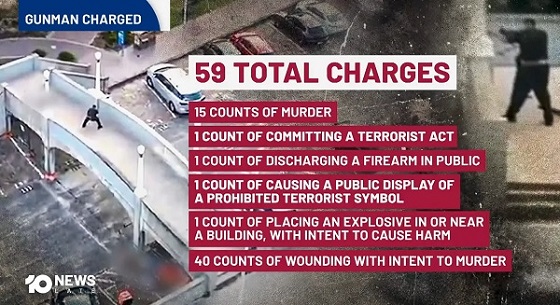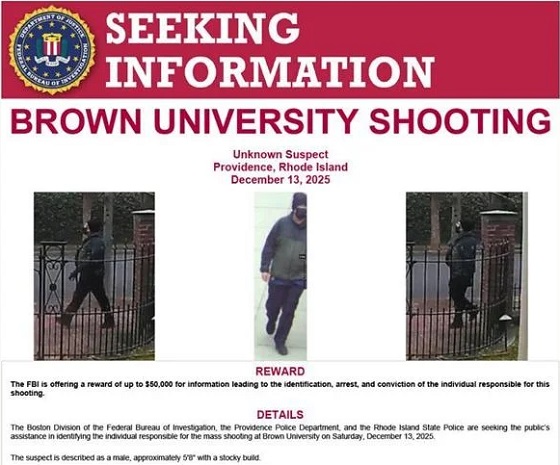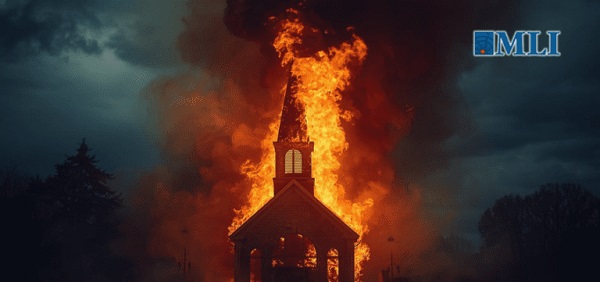Crime
Anatomy of a police shooting on the Whitefish Lake First Nation

This is a compelling read and will help average citizens understand what members of Alberta’s police forces encounter in the course of their duties.
From the Alberta Serious Incident Response Team
Police shooting of armed man was reasonable
On Sept. 6, 2017, ASIRT was directed to investigate the circumstances surrounding the death of a 26-year-old man on the Whitefish Lake First Nation following an encounter with an RCMP officer that day.
ASIRT’s investigation was comprehensive and thorough, conducted using current investigative protocols and best practices. In addition to interviewing all relevant civilian and police witnesses, ASIRT seized all available video and audio recordings from the officer’s police vehicle, as well as all relevant police dispatch records, including recordings of the 911 calls and radio communications. ASIRT directed a forensic examination of the incident scene and seized several physical exhibits. The RCMP officer provided a voluntary, written statement.
At the outset, ASIRT engaged an independent Indigenous community liaison to review the completed investigation. Upon completion of the investigation, the community liaison had full access to ASIRT’s investigative file and to the team assigned to the investigation. The liaison could ask questions of the investigative team and make recommendations where necessary. At the conclusion of this process, the community liaison confirmed that ASIRT’s investigation into this incident was thorough, complete, and objective.
On Sept. 6, 2017 at approximately 6:15 p.m., St. Paul RCMP received a 911 call from a woman indicating that a family member could be on the verge of hurting himself or others. She was concerned that he was suicidal, that he may be in medical distress, he appeared to be sweaty and clammy, and that he was not acting like himself. At the time of the call, she advised that the man was walking down the road carrying a baseball bat, while she and another family member followed behind in a vehicle, attempting to persuade him to enter their truck and return home.
Approximately six minutes later, a second person called 911 to report that two young women on a recreational vehicle had encountered a man walking on the road who had almost attacked them with a baseball bat. The caller advised that the man appeared to be under the influence of alcohol or drugs.
An RCMP officer, in uniform and operating a marked police vehicle, responded to these calls. The officer spoke with the family member who told him that she believed the man would require an ambulance as he was sweating badly, and she advised that it appeared as if he wanted to commit suicide. She advised that they had been able to get the man into their truck, and the officer asked them to keep him there while he was on the way.
The second person called police again and advised that she had observed the man walking with a bat, provided the man’s possible first name and indicated that it appeared the man was trying to hit his parents with the bat while they were standing on their driveway.
The officer travelled to the scene with his vehicle’s emergency equipment activated for the majority of the trip. The officer’s police vehicle was equipped with both forward- and rear-facing video cameras. This system was operational and captured both camera perspectives on video with accompanying audio and recorded time stamps. The rear-facing camera was intended to capture the rear seat of the police vehicle, but provided a limited view to the sides of the vehicle and towards the back. While the cameras did not capture full frames of the entire incident, they did capture an audio recording of the incident in its entirety, and portions of video in which the officer and/or the man can be seen at various points. As such, there are aspects of these events that are reliably established by the available audio and video recordings.
At 7:04 p.m., the officer pulled up to the 26-year-old man, who was walking on the road. The officer exited his vehicle and, in a calm voice, addressed the man by name and asked him, “What’s going on?” Neither the officer nor the man were on camera. Within three seconds, the officer can be heard repeatedly calling out, “Drop the knife,” as he stepped into camera view on the driver’s side of his vehicle and rapidly backed away from where the man would have been. The man appeared to follow and the officer fired his Conducted Energy Weapon (CEW), commonly referred to as a Taser, which caused the man to drop to one knee but failed to disarm him. Very quickly, the man was able to rise and continue towards the officer. The officer continued to direct the man to “Drop the knife,” sounding increasingly more frantic, and continued to try to create space by backing away around the back of the police truck bed.
The armed man can be seen to clearly and quickly pursue the officer towards the rear of the police vehicle. At the rear of the police vehicle truck bed, both the man and the officer are off-camera but can still be heard. Having directed the man to again drop the knife multiple times following the use of the CEW, the officer can clearly be heard to tell the man, “Drop the knife or you’re going to get shot.” Within four seconds of this command and warning, and following two additional directions to drop the knife, at 7:04:47 p.m., two gunshots are heard. The officer immediately calls “shots fired” repeatedly over the police radio. Although the man initially fell to the ground after being shot, and can be heard groaning, he maintained possession of the knife and the officer can be heard to yell “Drop the knife,” an additional six times following the shots, before again radioing “shots fired.”
Approximately 10 seconds after the man was shot, the forward-facing camera recorded the man’s family pulling out of a driveway in the distance and onto the road, then driving up to the scene. The officer is instructing the man to get down on the ground and drop the knife, and can be seen on the passenger side of the police vehicle backing away from where the man would have been. As the family members began to exit the vehicle, the man was briefly seen to be pursuing the officer at the edge of the camera view but appears to fall or falter.
Upon the arrival of the family, the officer can be heard to repeatedly yell “stay back.” The two family members walked in the direction of the ongoing incident. The subject officer continued to yell commands to “get down” and “drop the knife.” Within seconds, a second civilian vehicle arrived on scene. The occupants were not related to the man or his family.
At this point, the man slowly got to his feet and advanced in the direction of the officer, making a swinging or thrusting motion with the knife. Simultaneously, on video, a family member retreated to the area in front of the police vehicle, crying, as the officer continued to yell “drop the knife” and ordering the man to “get down on the ground.” As the man advanced again on the officer, this family member could be seen and heard screaming and pleading with the man to “get down” at least twice, and shortly thereafter, begging him to “stay down.” Ultimately, the man’s injuries caused him to collapse. The officer provided emergency first aid until additional officers and EMS arrived on scene.
The man was pronounced deceased at 8:09 p.m. An autopsy determined that the man had sustained two gunshot wounds: one to the right flank and one to the right upper thigh. The second gunshot wound transected organs and major blood vessels, causing rapid and significant blood loss that became fatal within minutes. The medical examiner confirmed that these injuries would not have been instantly fatal, and that it would have been possible for the man to walk or move for some time after the injuries. A toxicology report revealed the presence only of prescription and over-the-counter medication, with no alcohol present in the man’s body.
Interviews with family members confirmed that the man had been acting strangely all day, being very quiet. At approximately 2 p.m., the man reportedly made a comment “today is the day,” which a family member interpreted as the man telling her he was going “to go” on this day. The man also told a family member, “I gave my soul to the devil,” and this family member felt that something was not right with the man. She believed him to be suffering from worsening mental health issues. She advised that the man would stare into space and have conversations with people who were not around.
The man’s knife, recovered at the scene, was similar to a filet or boning knife with an approximately five-inch handle and seven-inch blade.
The officer, on duty, in full uniform and driving a fully marked RCMP vehicle, responded to several calls for assistance regarding the man’s actions. While the initial report was in relation to mental health concerns, subsequent calls were complaints of a weapons incident. In any case, the officer would have been lawfully entitled to take the man into custody under both the Mental Health Act and the Criminal Code. Considering these factors, the officer was at all times lawfully placed and acting in the course of his duty during his interactions with the man. The relevant consideration is thus the level of force used during the incident.
Under Sec. 25 of the Criminal Code, an officer is entitled to use as much force as necessary in the lawful execution of his or her duties. This can include force that is intended or likely to cause death or grievous bodily harm, when officers reasonably believe that such force is necessary to defend themselves or someone under their protection from death or grievous bodily harm. Further, under Sec. 34 of the Criminal Code, any person, including a police officer, is entitled to the use of reasonable force in defence of themselves or another. Factors in assessing the reasonableness of force used can include the use or threatened use of a weapon, the imminence of the threat, other options available, and the nature of the force or threat of force itself.
Having reviewed the evidence in this case, ASIRT executive director Susan D. Hughson, QC, has determined that there are no reasonable grounds nor even reasonable suspicion to believe that the officer committed any offences.
Looking at the evidence in its entirety, it is clear that the officer was responding to a call of an individual whose behaviour was erratic, who was possibly suicidal, who may have been involved in an incident where he swung a bat at two young women and who was also potentially armed. When the officer encountered the man, the evidence established that the man was armed with a knife and in a position to cause grievous bodily harm or death. The evidence also established that the man actively pursued the officer while armed with the knife. After the officer directed the man to “drop the knife” no less than 12 times, the officer used the CEW, which failed to disarm, disable or dissuade the man.
In these circumstances, the man both subjectively and objectively posed a risk of grievous bodily harm or death to the officer. The force used by the subject officer was justified and reasonable. The officer had diligently tried to avoid the use of lethal force as demonstrated by his repeated attempts to get the man to drop the knife, the unsuccessful use of the CEW as an intermediate weapon in an attempt to disarm and incapacitate the man, and his very clear warnings to drop the knife or the man would be shot. But as the man closed the distance, the officer was left with no other options.
The circumstances in this case speak to both the continuing nature of the threat itself, but also to the officer’s other efforts before resorting to a higher degree of force. Objectively, there can be no doubt that in these circumstances, while the officer clearly attempted to avoid it, resort to lethal force was both justified and reasonable.
It is impossible to determine what the man actually intended. The only indication of what he might have been thinking is what might be inferred from his conduct. He was not behaving rationally, was clearly actively and aggressively advancing on the officer with the knife and was not deterred by the CEW, the repeated commands and warning — or, in fact, even being shot. He continued his pursuit of the officer until he could physically no longer do so.
A person in the midst of a mental health crisis is as capable as any other person of causing grievous bodily harm or death to another person. That person can be even more dangerous given one cannot expect them to respond rationally to the situation or an officer’s presence. The evidence established that the officer used every tool available to him to try and avoid having to use lethal force, until the point that he had no other safe option to protect himself but lethal force. On that basis, the level of force employed, while tragic, was lawful.
Having found that there are no reasonable grounds to believe that the officer committed any offences, the officer will not be charged.
This finding does not diminish the tragedy of the loss for the family of this young man, who was clearly in the midst of some form of health crisis, nor how devastating the incident was for the family members who were present for portions of this event. ASIRT extends its sincere condolences to the family and friends of the man.
Crime
The Uncomfortable Demographics of Islamist Bloodshed—and Why “Islamophobia” Deflection Increases the Threat


Addressing realities directly is the only path toward protecting communities, confronting extremism, and preventing further loss of life, Canadian national security expert argues.
After attacks by Islamic extremists, a familiar pattern follows. Debate erupts. Commentary and interviews flood the media. Op-eds, narratives, talking points, and competing interpretations proliferate in the immediate aftermath of bloodshed. The brief interval since the Bondi beach attack is no exception.
Many of these responses condemn the violence and call for solidarity between Muslims and non-Muslims, as well as for broader societal unity. Their core message is commendable, and I support it: extremist violence is horrific, societies must stand united, and communities most commonly targeted by Islamic extremists—Jews, Christians, non-Muslim minorities, and moderate Muslims—deserve to live in safety and be protected.
Yet many of these info-space engagements miss the mark or cater to a narrow audience of wonks. A recurring concern is that, at some point, many of these engagements suggest, infer, or outright insinuate that non-Muslims, or predominantly non-Muslim societies, are somehow expected or obligated to interpret these attacks through an Islamic or Muslim-impact lens. This framing is frequently reinforced by a familiar “not a true Muslim” narrative regarding the perpetrators, alongside warnings about the risks of Islamophobia.
These misaligned expectations collide with a number of uncomfortable but unavoidable truths. Extremist groups such as ISIS, Al-Qaeda, Hamas, Hezbollah, and decentralized attackers with no formal affiliations have repeatedly and explicitly justified their violence through interpretations of Islamic texts and Islamic history. While most Muslims reject these interpretations, it remains equally true that large, dynamic groups of Muslims worldwide do not—and that these groups are well prepared to, and regularly do, use violence to advance their version of Islam.
Islamic extremist movements do not, and did not, emerge in a vacuum. They draw from the broader Islamic context. This fact is observable, persistent, and cannot be wished or washed away, no matter how hard some may try or many may wish otherwise.
Given this reality, it follows that for most non-Muslims—many of whom do not have detailed knowledge of Islam, its internal theological debates, historical divisions, or political evolution—and for a considerable number of Muslims as well, Islamic extremist violence is perceived as connected to Islam as it manifests globally. This perception persists regardless of nuance, disclaimers, or internal distinctions within the faith and among its followers.
THE COST OF DENIAL AND DEFLECTION
Denying or deflecting from these observable connections prevents society from addressing the central issues following an Islamic extremist attack in a Western country: the fatalities and injuries, how the violence is perceived and experienced by surviving victims, how it is experienced and understood by the majority non-Muslim population, how it is interpreted by non-Muslim governments responsible for public safety, and how it is received by allied nations. Worse, refusing to confront these difficult truths—or branding legitimate concerns as Islamophobia—creates a vacuum, one readily filled by extremist voices and adversarial actors eager to poison and pollute the discussion.
Following such attacks, in addition to thinking first of the direct victims, I sympathize with my Muslim family, friends, colleagues, moderate Muslims worldwide, and Muslim victims of Islamic extremism, particularly given that anti-Muslim bigotry is a real problem they face. For Muslim victims of Islamic extremism, that bigotry constitutes a second blow they must endure. Personal sympathy, however, does not translate into an obligation to center Muslim communal concerns when they were not the targets of the attack. Nor does it impose a public obligation or override how societies can, do, or should process and respond to violence directed at them by Islamic extremists.
As it applies to the general public in Western nations, the principle is simple: there should be no expectation that non-Muslims consider Islam, inter-Islamic identity conflicts, internal theological disputes, or the broader impact on the global Muslim community, when responding to attacks carried out by Islamic extremists. That is, unless Muslims were the victims, in which case some consideration is appropriate.
Quite bluntly, non-Muslims are not required to do so and are entitled to reject and push back against any suggestion that they must or should. Pointedly, they are not Muslims, a fact far too many now seem to overlook.
The arguments presented here will be uncomfortable for many and will likely provoke polarizing discussion. Nonetheless, they articulate an important, human-centered position regarding how Islamic extremist attacks in Western nations are commonly interpreted and understood by non-Muslim majority populations.
Non-Muslims are free to give no consideration to Muslim interests at any time, particularly following an Islamic extremist attack against non-Muslims in a non-Muslim country. The sole exception is that governments retain an obligation to ensure the safety and protection of their Muslim citizens, who face real and heightened threats during these periods. This does not suggest that non-Muslims cannot consider Muslim community members; it simply affirms that they are under no obligation to do so.
The impulse for Muslims to distance moderate Muslims and Islam from extremist attacks—such as the targeting of Jews in Australia or foiled Christmas market plots in Poland and Germany—is understandable.
Muslims do so to protect their own interests, the interests of fellow Muslims, and the reputation of Islam itself. Yet this impulse frequently collapses into the “No True Scotsman” fallacy, pointing to peaceful Muslims as the baseline while asserting that the attackers were not “true Muslims.”
Such claims oversimplify the reality of Islam as it manifests globally and fail to address the legitimate political and social consequences that follow Islamic extremist attacks in predominantly non-Muslim Western societies. These deflections frequently produce unintended effects, such as strengthening anti-Muslim extremist sentiments and movements and undermining efforts to diminish them.
The central issue for public discourse after an Islamic extremist attack is not debating whether the perpetrators were “true” or “false” Muslims, nor assessing downstream impacts on Muslim communities—unless they were the targets.
It is a societal effort to understand why radical ideologies continue to emerge from varying—yet often overlapping—interpretations of Islam, how political struggles within the Muslim world contribute to these ideologies, and how non-Muslim-majority Western countries can realistically and effectively confront and mitigate threats related to Islamic extremism before the next attack occurs and more non-Muslim and Muslim lives are lost.
Addressing these realities directly is the only path toward protecting communities, confronting extremism, and preventing further loss of life.
Ian Bradbury, a global security specialist with over 25 years experience, transitioned from Defence and NatSec roles to found Terra Nova Strategic Management (2009) and 1NAEF (2014). A TEDx, UN, NATO, and Parliament speaker, he focuses on terrorism, hybrid warfare, conflict aid, stability operations, and geo-strategy.
The Bureau is a reader-supported publication.
To receive new posts and support my work, consider becoming a free or paid subscriber.
Crime
Brown University shooter dead of apparent self-inflicted gunshot wound

From The Center Square
By
Rhode Island officials said the suspected gunman in the Brown University mass shooting has been found dead of an apparent self-inflicted gunshot wound, more than 50 miles away in a storage facility in southern New Hampshire.
The shooter was identified as Claudio Manuel Neves-Valente, a 48-year-old Brown student and Portuguese national. Neves-Valente was found dead with a satchel containing two firearms inside in the storage facility, authorities said.
“He took his own life tonight,” Providence police chief Oscar Perez said at a press conference, noting that local, state and federal law officials spent days poring over video evidence, license plate data and hundreds of investigative tips in pursuit of the suspect.
Perez credited cooperation between federal state and local law enforcement officials, as well as the Providence community, which he said provided the video evidence needed to help authorities crack the case.
“The community stepped up,” he said. “It was all about groundwork, public assistance, interviews with individuals, and good old fashioned policing.”
Rhode Island Attorney General Peter Neronha said the “person of interest” identified by private videos contacted authorities on Wednesday and provided information that led to his whereabouts.
“He blew the case right open, blew it open,” Neronha said. “That person led us to the car, which led us to the name, which led us to the photograph of that individual.”
“And that’s how these cases sometimes go,” he said. “You can feel like you’re not making a lot of progress. You can feel like you’re chasing leaves and they don’t work out. But the team keeps going.”
The discovery of the suspect’s body caps an intense six-day manhunt spanning several New England states, which put communities from Providence to southern New Hampshire on edge.
“We got him,” FBI special agent in charge for Boston Ted Docks said at Thursday night’s briefing. “Even though the suspect was found dead tonight our work is not done. There are many questions that need to be answered.”
He said the FBI deployed around 500 agents to assist local authorities in the investigation, in addition to offering a $50,000 reward. He says that officials are still looking into the suspect’s motive.
Two students were killed and nine others were injured in the Brown University shooting Saturday, which happened when an undetected gunman entered the Barus and Holley building on campus, where students were taking exams before the holiday break. Providence authorities briefly detained a person in the shooting earlier in the week, but then released them.
Investigators said they are also examining the possibility that the Brown case is connected to the killing of a Massachusetts Institute of Technology professor in his hometown.
An unidentified gunman shot MIT professor Nuno Loureiro multiple times inside his home in Brookline, about 50 miles north of Providence, according to authorities. He died at a local hospital on Tuesday.
Leah Foley, U.S. attorney for Massachusetts, was expected to hold a news briefing late Thursday night to discuss the connection with the MIT shooting.
-

 Energy2 days ago
Energy2 days agoCanada’s sudden rediscovery of energy ambition has been greeted with a familiar charge: hypocrisy
-

 armed forces2 days ago
armed forces2 days agoOttawa’s Newly Released Defence Plan Crosses a Dangerous Line
-

 Alberta2 days ago
Alberta2 days agoAlberta’s huge oil sands reserves dwarf U.S. shale
-

 Alberta2 days ago
Alberta2 days agoCanada’s New Green Deal
-

 Business2 days ago
Business2 days agoCOP30 finally admits what resource workers already knew: prosperity and lower emissions must go hand in hand
-

 Business1 day ago
Business1 day agoOttawa Pretends To Pivot But Keeps Spending Like Trudeau
-

 Agriculture5 hours ago
Agriculture5 hours agoWhy is Canada paying for dairy ‘losses’ during a boom?
-

 Indigenous2 days ago
Indigenous2 days agoResidential school burials controversy continues to fuel wave of church arsons, new data suggests







